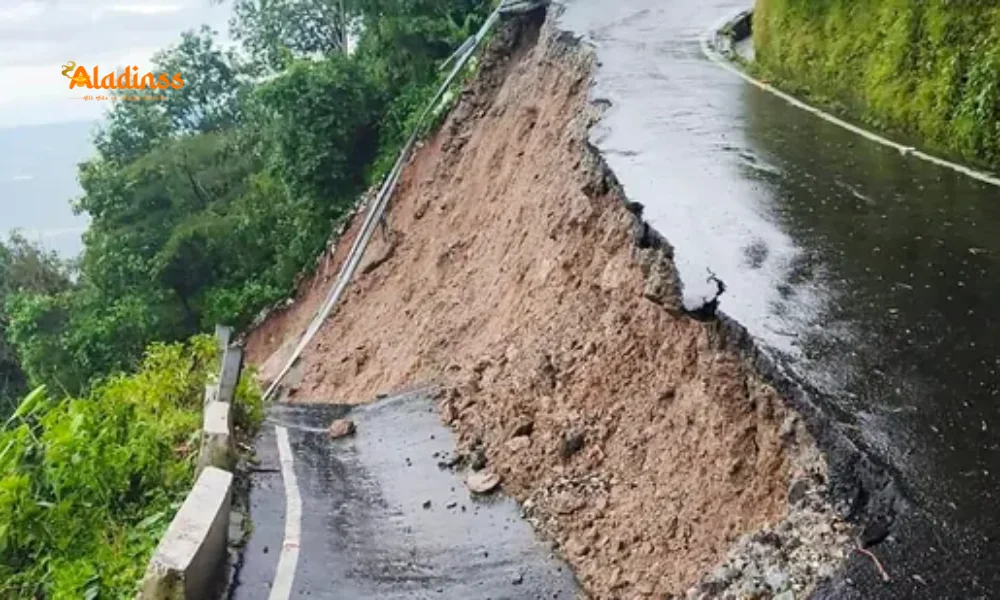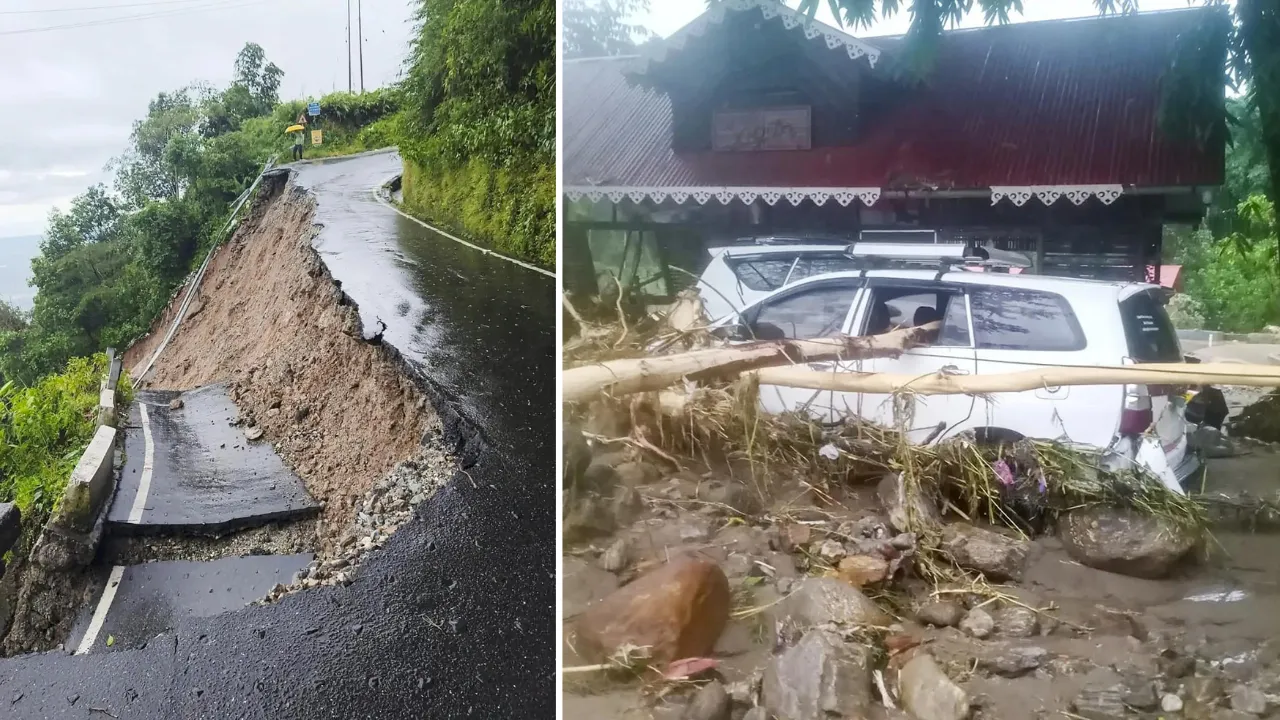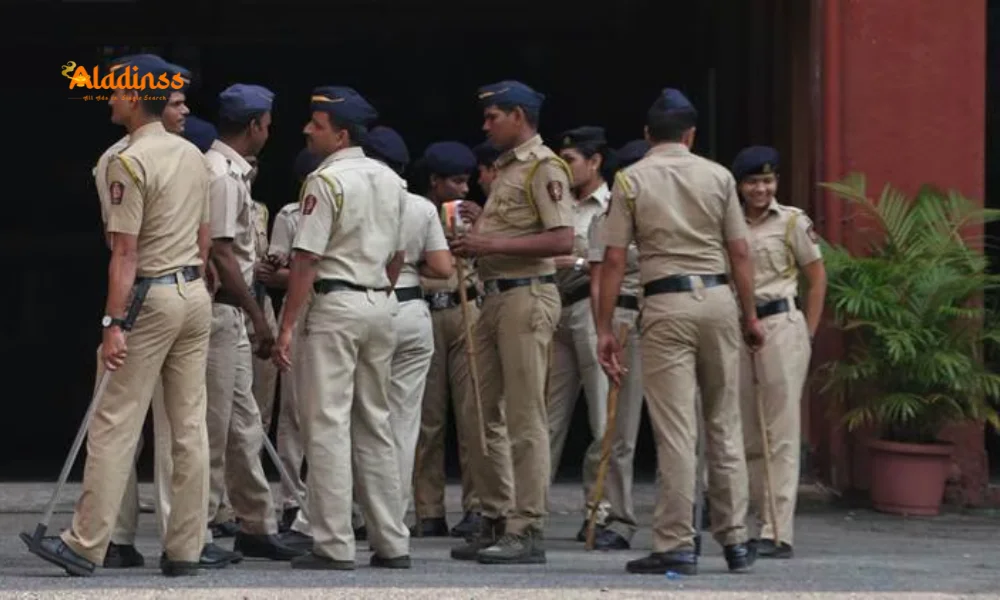Darjeeling Landslide: 20 Dead in West Bengal Rains

Darjeeling Landslide Tragedy: 20 Lives Lost in West Bengal Heavy Rains Fury
Relentless heavy rains in West Bengal have unleashed a wave of destruction in Darjeeling district, triggering multiple landslides that claimed at least 20 lives on October 5, 2025. Houses were razed to the ground, vital roads crumbled under the onslaught, and remote villages in the hills were isolated from the outside world. The north Bengal flood crisis extended to neighboring Kalimpong, Cooch Behar, Jalpaiguri, and Alipurduar districts, where downpours battered the scenic terrains. As Teesta River flood waters surged due to overflows from Bhutan's Kurichu and Tala dams, the region grappled with overflowing rivers and flash floods. This darjeeling landslide heavy rain event has drawn national attention, with West Bengal Chief Minister Mamata Banerjee set to tour the devastated zones today.

The popular hill station of Darjeeling, known for its tea gardens and misty peaks, transformed into a nightmare as continuous downpours eroded slopes, sending boulders and mud cascading into settlements. In a particularly harrowing incident, a massive slide buried an entire building in a residential pocket, killing 12 people instantly. Rescue operations are ongoing, but treacherous terrain and poor connectivity have hampered efforts. The west bengal floods 2025 have not only shattered communities but also disrupted tourism, a lifeline for the local economy, leaving hundreds homeless and scores injured.
Widespread Damage: Landslides Flatten Homes and Sever Roads in North Bengal
The darjeeling rain onslaught began intensifying on October 4, saturating the soil and destabilizing fragile hill slopes. In Kalimpong, similar landslides blocked key arterial routes, stranding travelers and cutting off supplies to upland villages. Cooch Behar and Jalpaiguri saw riverbanks breach, inundating farmlands and low-lying hamlets. Alipurduar, with its dense forests, reported uprooted trees adding to the chaos on highways. Eyewitnesses recounted how entire sections of hillside gave way, swallowing modest homes built precariously on inclines-a stark reminder of the vulnerabilities in these seismic-prone zones.
Road infrastructure bore the brunt, with the Siliguri-Darjeeling state highway suffering severe damage. The iron bridge over Balasan River in Dudhia was battered by raging currents, its pillars undermined and traffic halted indefinitely. Vehicles, including trucks and local autos, were swept away in the torrent, amplifying the human toll. This north bengal flood scenario echoes past calamities, yet the scale this time, fueled by climate anomalies, has overwhelmed district administrations.
- Darjeeling: 12 deaths from building collapse in landslide.
- Kalimpong: Multiple slides isolate remote hamlets.
- Cooch Behar: Farmlands submerged under floodwaters.
- Jalpaiguri: Highway blockages delay aid delivery.
- Alipurduar: Tree falls exacerbate road closures.
Beyond immediate losses, the economic ripple effects are profound. Tea estates, already reeling from erratic weather, face labor shortages as workers prioritize family safety. Schools and markets in affected areas remain shuttered, prolonging the hardship for residents.
River Overflows and Dam Releases: Teesta and Jhaldaka Swell Dangerously
The deluge's cross-border impact became evident as heavy rains in Bhutan led to overflows at the Kurichu and Tala hydroelectric dams. Emergency water releases downstream exacerbated the teesta river flood, pushing the waterway beyond its banks and flooding vast stretches along the India-Bhutan frontier. Jhaldaka River followed suit, its turbid waters encroaching on Siliguri's outskirts and threatening urban pockets. In Dudhia, the Balasan River's fury not only demolished the highway bridge but also carried away livestock and household goods from riverside dwellings.
Further south, in West Midnapore, a dam under maintenance saw a sudden surge in water levels, forcing uncontrolled discharges. This triggered overflows in local waterways, submerging coastal belts and agricultural fields. The incident highlights the fragility of aging infrastructure amid intensifying monsoon patterns, a growing concern in flood-prone West Bengal. Authorities have issued alerts for downstream communities, urging evacuations from vulnerable spots.
- Kurichu Dam: Overflow prompts massive water release.
- Tala Dam: Contributes to Teesta's unprecedented swell.
- Balasan River: Vehicles and debris swept in floods.
- Jhaldaka River: Banks breached near Siliguri.
- Midnapore Dam: Sudden rise floods coastal zones.
Hydrologists attribute this to a combination of upstream precipitation and saturated catchments, underscoring the need for better transboundary water management protocols between India and Bhutan.
Rescue Efforts Intensify: Disaster Teams Battle Slippery Slopes and Swollen Waters
As the death toll from landslides death toll climbed to 20, specialized disaster relief teams from the National Disaster Response Force (NDRF) and state fire services swung into action. Helicopters airlifted supplies to cut-off villages in Darjeeling and Kalimpong, while ground crews navigated muddy trails to extract survivors pinned under debris. In flood-ravaged Siliguri, boats were deployed for swift-water rescues, saving dozens from rooftops and elevated spots. The operation, coordinated from a war room in Kolkata, faces challenges from ongoing showers, but officials report over 500 evacuations so far.
Local volunteers played a pivotal role, forming human chains to ferry the injured across unstable bridges. Temporary shelters in safer hill areas house displaced families, with provisions for food, medical aid, and counseling. The west bengal rain alert remains in effect, with the India Meteorological Department forecasting more precipitation through October 7, potentially worsening the siliguri flood situation.
Leadership Response: Mamata Banerjee's Visit Amid National Condolences
West Bengal Chief Minister Mamata Banerjee is slated to inspect the flood affected villages darjeeling today, October 6, promising accelerated relief and reconstruction. Her itinerary includes interactions with survivors and assessments of infrastructure damage, signaling a hands-on approach to the crisis. Meanwhile, President Droupadi Murmu conveyed deep sorrow, emphasizing national solidarity in the face of nature's wrath.
Prime Minister Narendra Modi echoed these sentiments, assuring full central government flood support for rescue operations and rehabilitation. He directed the deployment of additional NDRF battalions and expedited financial aid under the State Disaster Response Fund. Lok Sabha Opposition Leader Rahul Gandhi also extended condolences, urging a bipartisan effort to bolster resilience against such recurring disasters. These statements have galvanized public donations to relief funds, highlighting unity in adversity.
- Mamata Banerjee: On-ground assessment today.
- President Murmu: Prays for swift recovery.
- PM Modi: Central aid for rescues and rebuilds.
- Rahul Gandhi: Calls for enhanced preparedness.
The political spotlight has also sparked discussions on long-term strategies, from early warning systems to eco-friendly slope stabilization.
Root Causes and Historical Context: Climate Change Amplifies North Bengal Risks
This darjeeling landslide due to heavy rain 2025 is symptomatic of broader climate shifts, with the Himalayas witnessing erratic monsoons and glacial melts. Deforestation for tourism and unplanned constructions have exacerbated soil erosion, making slopes prone to failure. Historical parallels abound: the 2017 Sikkim floods killed dozens, while 2023's Kalimpong slides displaced thousands. Experts warn that without stringent land-use policies, such events could become annual ordeals.
The IMD's west bengal rain alert highlights a low-pressure system over the Bay of Bengal, channeling moisture into the sub-Himalayan belt. Coupled with Bhutan's dam dynamics, it creates a perfect storm for downstream inundation. Mitigation measures like afforestation and reinforced embankments are imperative, as advocated by environmental groups.
Path to Recovery: Rebuilding Resilience in Flood-Prone Darjeeling Hills
As waters recede, focus shifts to rehabilitation. The state has allocated funds for temporary housing and crop compensation, targeting the hardest-hit agrarian communities. International aid from Bhutanese counterparts could aid in joint river monitoring. Community-led initiatives, like village-level alert networks, are gaining traction to empower locals.
In the long run, integrating climate-resilient infrastructure-such as elevated roads and smart dams-will be key. The tragedy, while devastating, offers a clarion call for sustainable development in this biodiversity hotspot. As Darjeeling heals, its resilient spirit endures, promising a greener, safer tomorrow.
This north bengal flood narrative underscores the urgent interplay between nature and human habitation. With concerted efforts, West Bengal can mitigate future threats, turning grief into proactive resolve.
Comment / Reply From
No comments yet. Be the first to comment!











